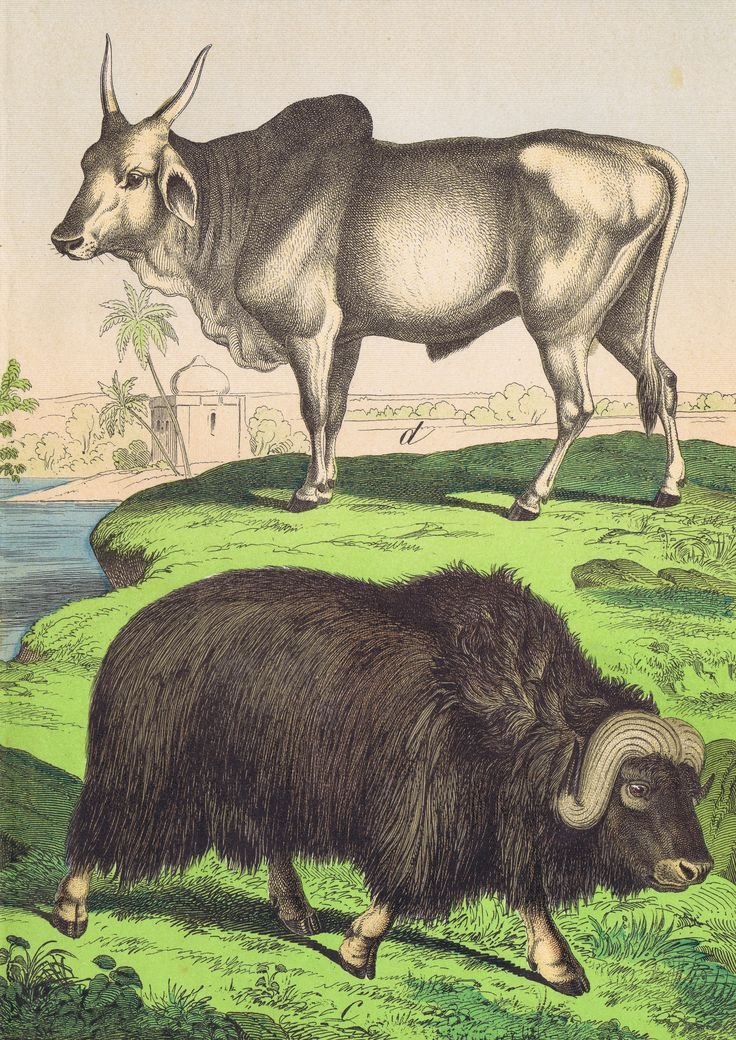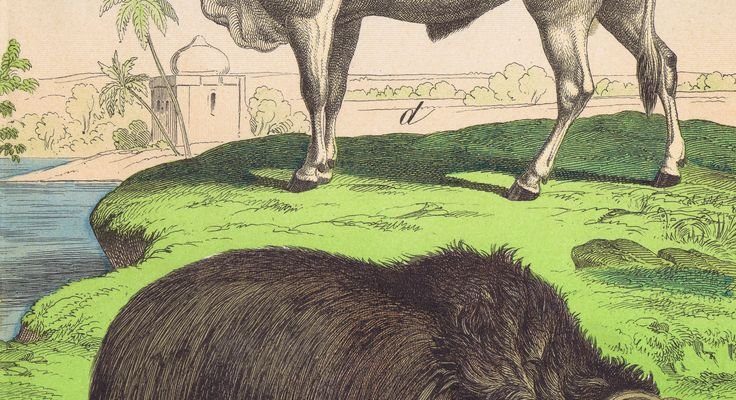
Imagine standing in a bustling market, surrounded by a mix of vibrant sights and sounds. The African buffalo is like a sturdy stall at that market—always there, resilient, and somehow central to the bustling ecosystem. With their social behavior and adaptability, they play a crucial role in shaping their environment and supporting the broader ecosystem. Now, let’s dive into their evolutionary history and uncover the twists and turns that have shaped these animals into what they are today.
The Origins of the African Buffalo
To understand the African buffalo’s history, we need to go way back—around 10 million years ago! At this time, Africa was a very different place, home to a diverse array of animals. The ancestors of the African buffalo likely shared habitats with early ungulates, a group of hoofed mammals that includes modern cows and goats. These early relatives were not quite the hulking creatures we see today. They were smaller and lived in different environments.
The story gets even more interesting. These early ancestors began to diversify as they adapted to various habitats throughout the continent. Some moved toward more open grasslands, while others stayed in dense forests. This adaptability was key—literally paving the way for what would become the African buffalo. The ability to thrive in different settings allowed them to spread across Africa, ultimately leading to the emergence of distinct species.
From Ancestors to Distinct Species
Fast forward to about 2.5 million years ago, during the Pleistocene epoch, when significant climatic changes began to shape Africa. During this time, the ancestors of present-day African buffalo underwent a major shift. The changing environment led to the evolution of different subspecies of buffalo, tailored to their climates and habitats.
You might wonder, how did they adapt so well? Well, their sturdy bodies and strong legs allowed them to graze extensively on grasses, while their social structure provided safety in numbers. Living in large herds helped them fend off predators, like lions and hyenas. Each herd could often vary in size, with a strong matriarch leading the way. The unique bond formed among herd members was a significant factor in their survival, too!
The Two Main Subspecies
Today, scientists recognize two main subspecies of the African buffalo: the Cape buffalo (*Syncerus caffer caffer*) and the Forest buffalo (*Syncerus caffer nanus*). While these two share a common ancestry, they have adapted to different habitats within Africa, leading to some interesting differences.
The Cape buffalo is larger and typically found in grasslands and savannas. They have that characteristic broad, curved horns that can span up to a meter. In contrast, the Forest buffalo is smaller, with a stockier build and shorter horns, which helps them navigate the dense, tropical forests of Central and West Africa. This difference highlights how adaptation plays a critical role in survival, making each subspecies uniquely suited for its environment.
Behavior and Social Structure
One of the most captivating aspects of the African buffalo is their complex social structure. Herds can range from a small group of a few dozen to hundreds of individuals! This social behavior fosters strong bonds and helps protect individuals from predators. These herds are often composed of females and their young, while males tend to roam in bachelor groups once they reach maturity.
Communication is crucial in buffalo herds. They use vocalizations, body language, and even the position of their horns to convey messages. For instance, a buffalo lowers its head and raises its ears to show aggression, warning others of potential danger. This intricate social network not only aids in protection but also fosters social learning among younger buffalo.
Habitat and Distribution
The African buffalo is found across a variety of habitats in sub-Saharan Africa, from open savannas to forested regions. Their ability to adapt to different environments has played a pivotal role in their success as a species. They are most commonly seen in national parks and reserves, where they enjoy protected areas free from human interference.
However, habitat loss is a growing concern. Agriculture, urbanization, and poaching have put pressure on their numbers and territories. The African buffalo’s adaptability is being tested as their environments continue to change. Conservation efforts are thus critical for maintaining healthy populations and their natural habitats.
The African Buffalo’s Role in Ecosystems
You might be surprised to learn just how vital African buffalo are to their ecosystems. As grazers, they contribute to plant growth by selectively feeding on grasses. This opens up space for other plant species and encourages biodiversity. Their movements create pathways in the grasslands, which benefit countless other animals, from insects to larger mammals.
Moreover, buffalo are known to stimulate the soil as they roam, helping to aerate and fertilize it through their droppings. These actions create a ripple effect, benefiting many aspects of the ecosystem, including other herbivores and predators. In many ways, without the African buffalo, the delicate balance of these habitats would falter.
Conservation Challenges and Efforts
As we discuss the evolutionary history of the African buffalo, it’s essential to acknowledge the challenges they face today. Habitat destruction, poaching, and diseases like bovine tuberculosis pose significant threats to their populations. Conservationists are working hard to protect these magnificent animals.
Efforts include establishing protected areas, anti-poaching patrols, and community outreach programs. By involving local communities in conservation, the hope is that we can create a sustainable coexistence between people and wildlife. You might be wondering how you can help; supporting wildlife organizations or visiting national parks can make a difference. Every action counts!
The evolutionary history of the African buffalo is a rich tapestry woven from millions of years of adaptation, survival, and social dynamics. From their humble beginnings to their current status as iconic creatures of the African landscape, they have proven to be resilient and adaptable. The African buffalo is not just a beautiful animal; it’s a crucial player in maintaining the health of their ecosystems.
As we navigate our ever-changing planet, let’s remember the importance of preserving these incredible animals and their habitats. Ultimately, understanding their past can help us ensure a brighter future for the African buffalo and the ecosystems they inhabit. So the next time you think about wildlife conservation, consider the African buffalo—an enduring symbol of resilience and strength in the wild.

